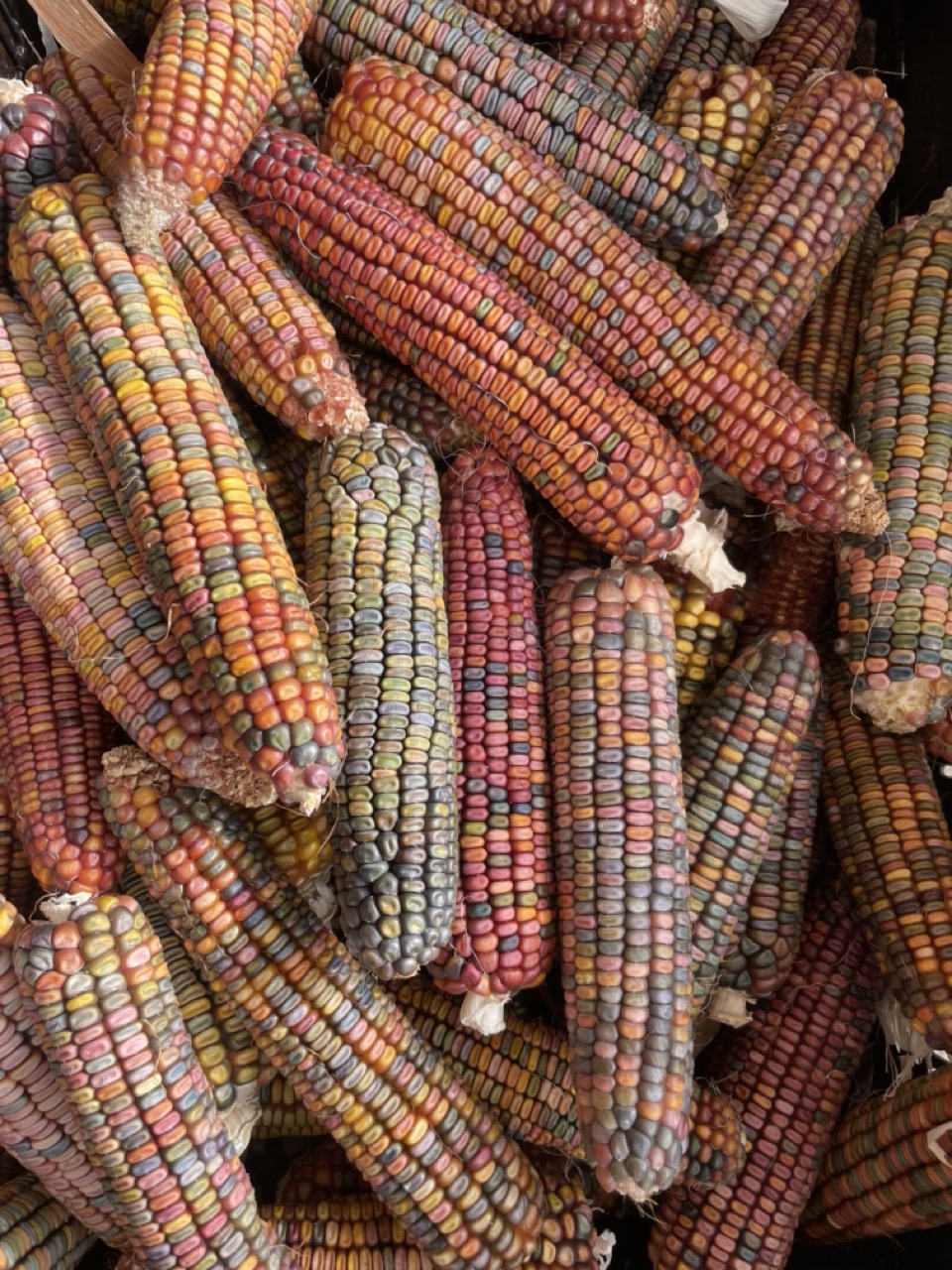
Desert Dent Corn
As a community of corn lovers, every year presents a challenging decision of which corn variety to grow. Due to corn’s tendency to cross-pollinate over distances up to 2 miles through wind-blown pollen grains, we can only grow one or two varieties each season. Desert Dent corn has become one of our favorite maize varieties to grow at Groundwork.
Desert Dent is a descendent of the “Earth Tones” variety and has been selected by our farm to have a multitude of matte colors, 8″ to 12″ cobs, consistent indentations, and drought resiliency. It holds up well even with high grasshopper and raccoon pressure. In 2024, we stopped irrigating at the beginning of July and were impressed that it withstood multiple dry periods to produce an abundant crop. Dent corn is named after its indentations, which are a result of both soft and hard starches drying differently in the kernels. Dent corn is one of the most common types of corn grown in the US and is often used for animal feed, ethanol production, and food products. Dent corn is also a very common traditional corn used for grinding, hominy, and masa.
This wildly diverse population of plant genetics is called a “grex.” The term grex is derived from the latin word for flock, referring to a population that is openly cross pollinating. Grexes are “agricultural memory banks,” meaning they hold an incredible depth of agronomic qualities from an assorted lineage of parental lines. You can easily see this in a variety like Desert Dent, with the multitude of color combinations. Many indigenous communities around the world have relied on grex populations for millennia, and only recently have modern civilizations created highly uniform varieties to fit the grocery store aesthetic. Grex populations will likely be the “food of the future” due to their ability to withstand changing climates and challenging environmental conditions. Seeds from our 2024 crop of Desert Dent Corn is available through High Desert Seed. Our target planting date for corn is usually May 20th, but if you’re late on your corn planting, you can still plant through the first week in June without any worries.